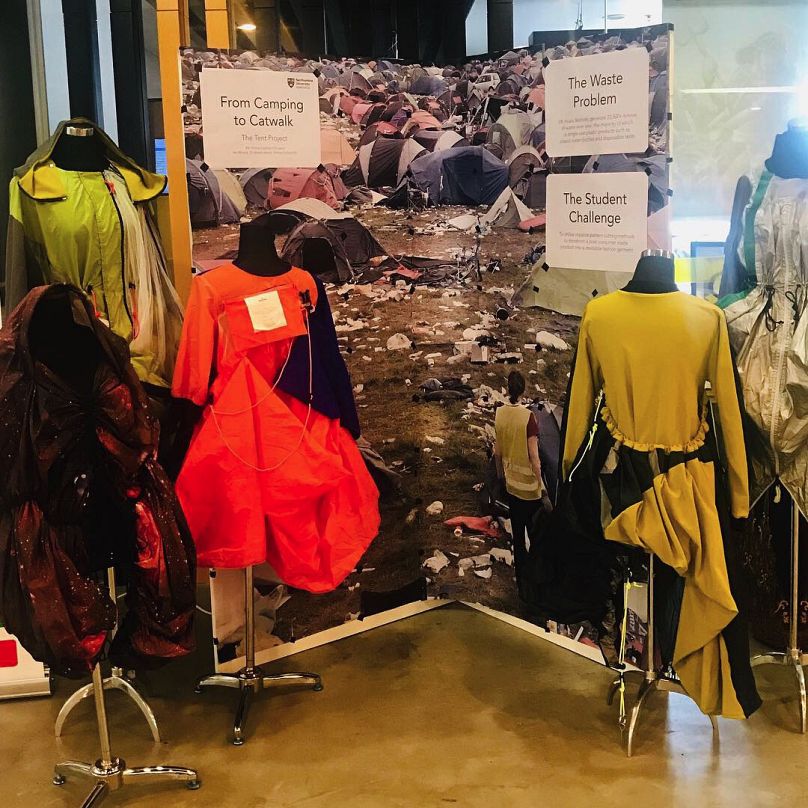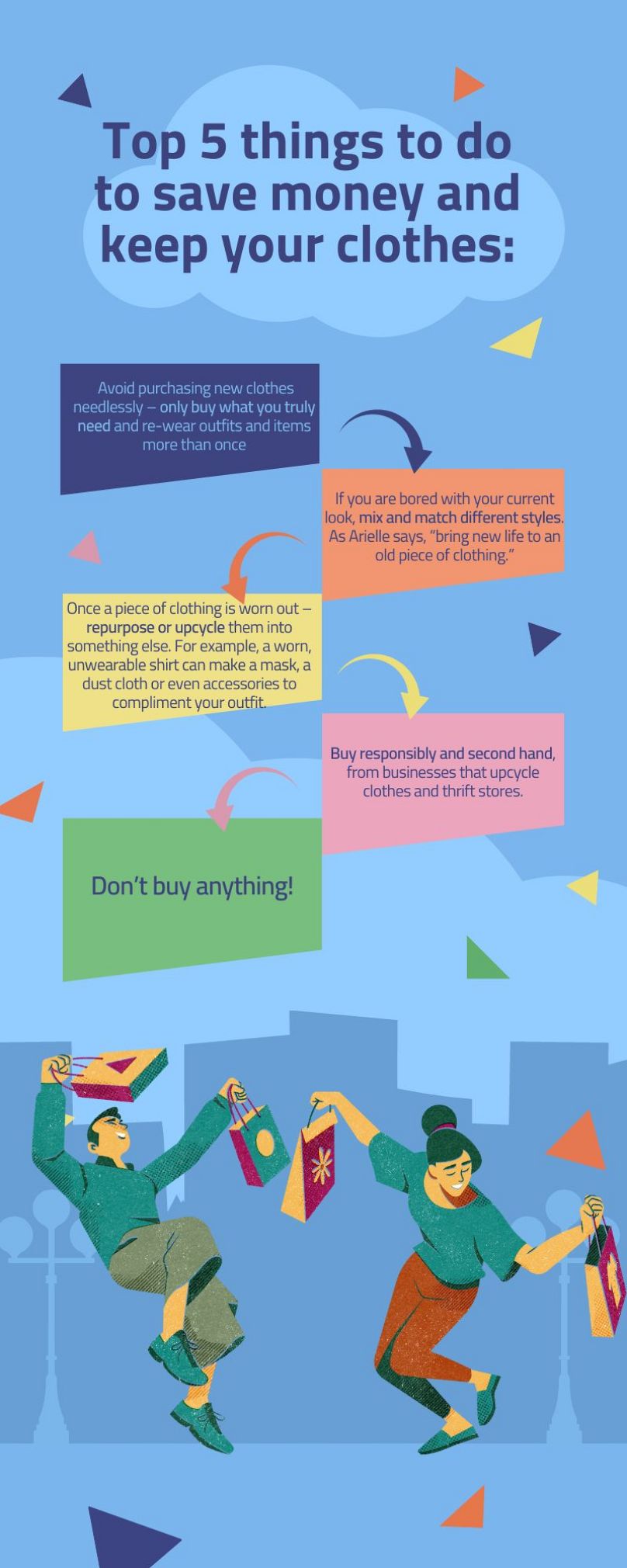How can you stop spending and start saving your clothes and continue to look great? Look no further, just follow Euronews Culture's tips to prevent the cost of living crisis from affecting your wardrobe
In a time where prices are spiking, driving up the cost of living, fashion and clothing may not be at the top of the priority list.
However, despite the price hikes seen across the globe, clothing stores seem to be experiencing a post pandemic surge in revenue.
Why and will it continue in the months to come?
Upcycling fashion
Dr. Alana James from the Northumbria School of Design believes that while the inflation and cost of living crisis won’t have that big of an impact on the fashion industry, it is important to look at product lifecycle beyond purchasing.
"I think when we when we consider the cost of living crisis and fashion, it's not just the purchasing of fashion. It's the care, it's the maintenance," says Dr. James.
"Obviously, energy bills are skyrocketing. So, are we going to be doing laundries as much as we used to? Are we going to be maintaining (our clothes) with the same kind of level of detail and quality that we used to as well?"
Interestingly, people have a more emotional and complex relationship with clothes. It’s a way to express identity, personality and an expression of self-care.
She recognises this and advises that individuals pay more upfront for better quality clothing so that they could last longer - unlike fast fashion which is cheaper but also lower quality. As an additional bonus, more expensive clothing usually implies better quality materials and therefore a longer lifespan.
"I would personally always suggest that individuals pay a slightly higher price for clothing. I'm not talking about splashing out on really luxurious items, but to buy the best quality that you can afford,” notes Dr. James, who adds that she would love for upcycling to become the norm and feels it has a lot of potential.
However, for all the potential, she says that second-hand stores and sites such as Vinted have a big role to play in the resigning of fashion and the way we consume clothes.
Out with fast, in with slow
Recent trends indicate that consumers are increasingly leaving behind fast fashion and moving towards buying more responsibly. This is leading the rise of slow fashion and sustainable fashion movements promoted by social media influencers.
However, while upcycling is becoming increasingly trendy, no one waited for social media to get on board...
During the Great Depression until the 50s, mothers would re-use flour or animal feed bags - which were made of cotton at the time - to make clothes. Mills Wheat flour bags in the US were famous for their floral prints, which would later be repurposed as clothing.
“Our parents and grandparents used to do this - repurpose materials to make clothes or household items," says slow fashion blogger Alexandra from myslowworld.
"When my shirts were worn out, I would make small bags to hold lavender or use my old pants to make something new."
Alexandra is from the Netherlands and launched her blog, myslowworld, in 2018. She wanted to share her slow fashion journey as she realised the threats and negative impacts of fast fashion. She was a student when she began, living on a budget, and was looking for ways to save money and to get the most out of her clothes.
She has noticed fluctuations in people's spending habits, especially in the wake of the pandemic and recent price hikes.
“Post-pandemic, people were living like gods in Paris, saying on social media 'Finally got the outfit we never got to wear' - so people were spending extravagantly," she says. "But now with the cost-of-living crisis, I think people are starting to move away from extravagance in order to save money."
Alexandra also taught herself how to sew via free YouTube tutorials. But she says she wouldn’t necessarily advise it for everyone.
“It is an expensive hobby and it takes a lot of pieces before you can make clothes – but if you have time, learn.”
Thrifty and stylish
In a bid to be more eco-concious, people have been turning to upcycling in order to get the most out of their clothes.
Arielle Sidney is an upcycling influencer on Instagram. Based in LA, she is no stranger to thrifting, upcycling and making her own clothes. She showcases her pieces on social media and YouTube, repurposing ordinary items into fun, fancy outfits.
For her, thrifting was a way to be creative, while being affordable, which eventually paved the way to experimenting with sewing.
“Pre-pandemic, I would thrift a lot, especially every time I visited a new city so I could find memorable pieces to have as keepsakes. But once I started sewing, I realized I could make my own cool, unique pieces and not break the bank. That's what I've been doing since 2020.”
Arielle began her upcycling journey during the pandemic to pass the time.
With no prior sewing experience, she taught herself how to use a sewing machine. While she makes her own clothes in order to save money, she has noticed the impact of the cost of living crisis.
“I recently went to a thrift store I used to visit a lot and found out that the prices had essentially doubled, which makes no sense as these clothes are donated for free," she says. "A used t-shirt should not cost $15!”
Upcycling as a business
According to France’s National Institute for statistics and economic studies, consumer prices increased by 5.8% year on year (June 2022). For the fashion industry however, they have seen only a slight increase of 0.5% in prices in June 2022 compared to the same time last year.
Jessica Solomon is a French, small business owner, seconde.main-brand, who specialises in upcycling.
When she launched her business, she couldn’t imagine not using materials and fabrics already in use.
“These materials already have a soul and have nothing to be embarrassed about compared to newer pieces which only decrease in quality.”
For her, using second-hand clothing so as to not generate new materials is a necessity for the future. But there are challenges ahead...
“I think that the challenge facing upcycling and repurposing is that it only interests independent creators who have not industrialised the method," comments Solomon. "It’s a skill that takes a long time and we need to find a way to streamline the process of reinventing tomorrow’s fashion and make it affordable.”
To sum things up, here is Euronews Culture's quick guide to make the most of your clothes, whilst saving some pennies in the process:













